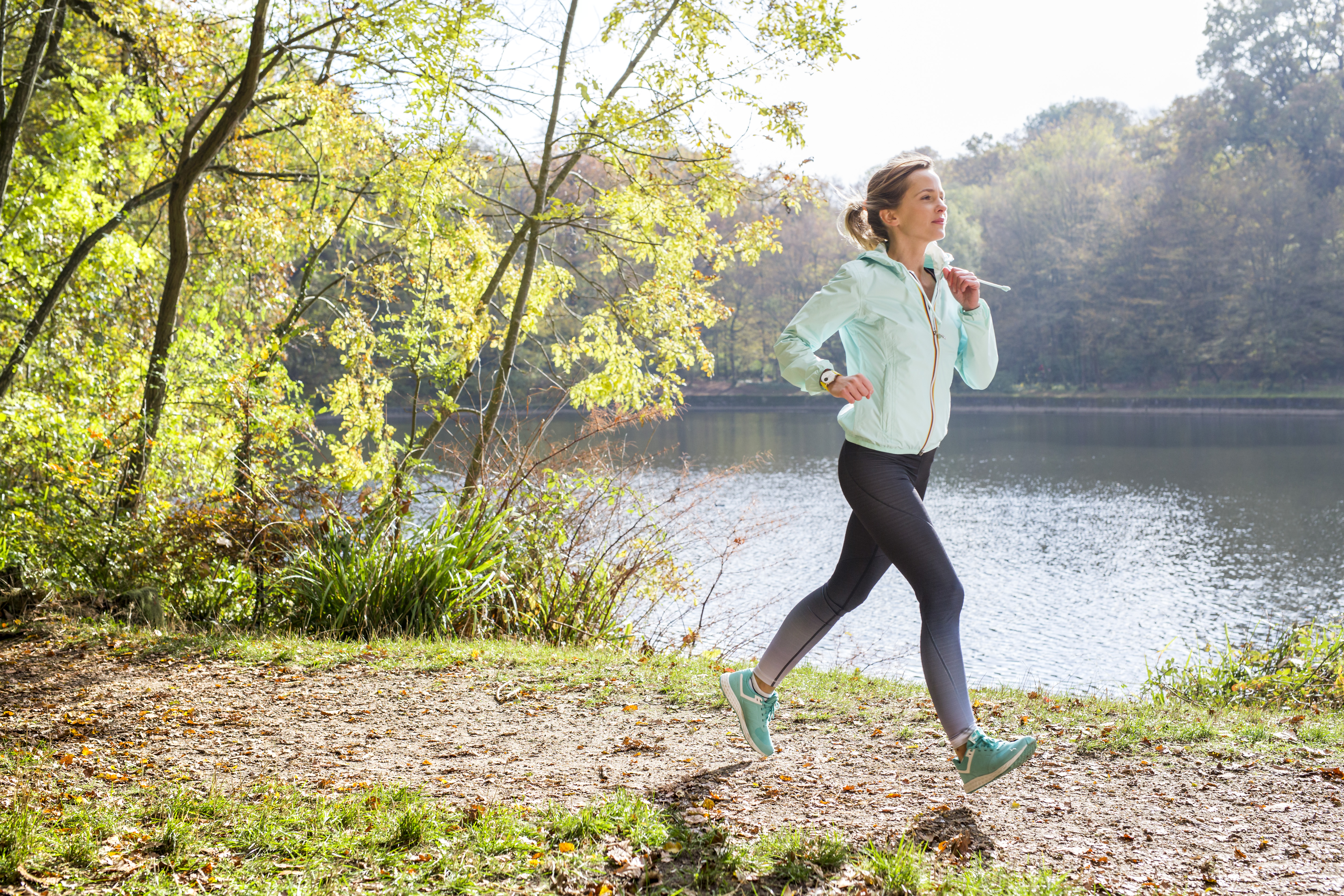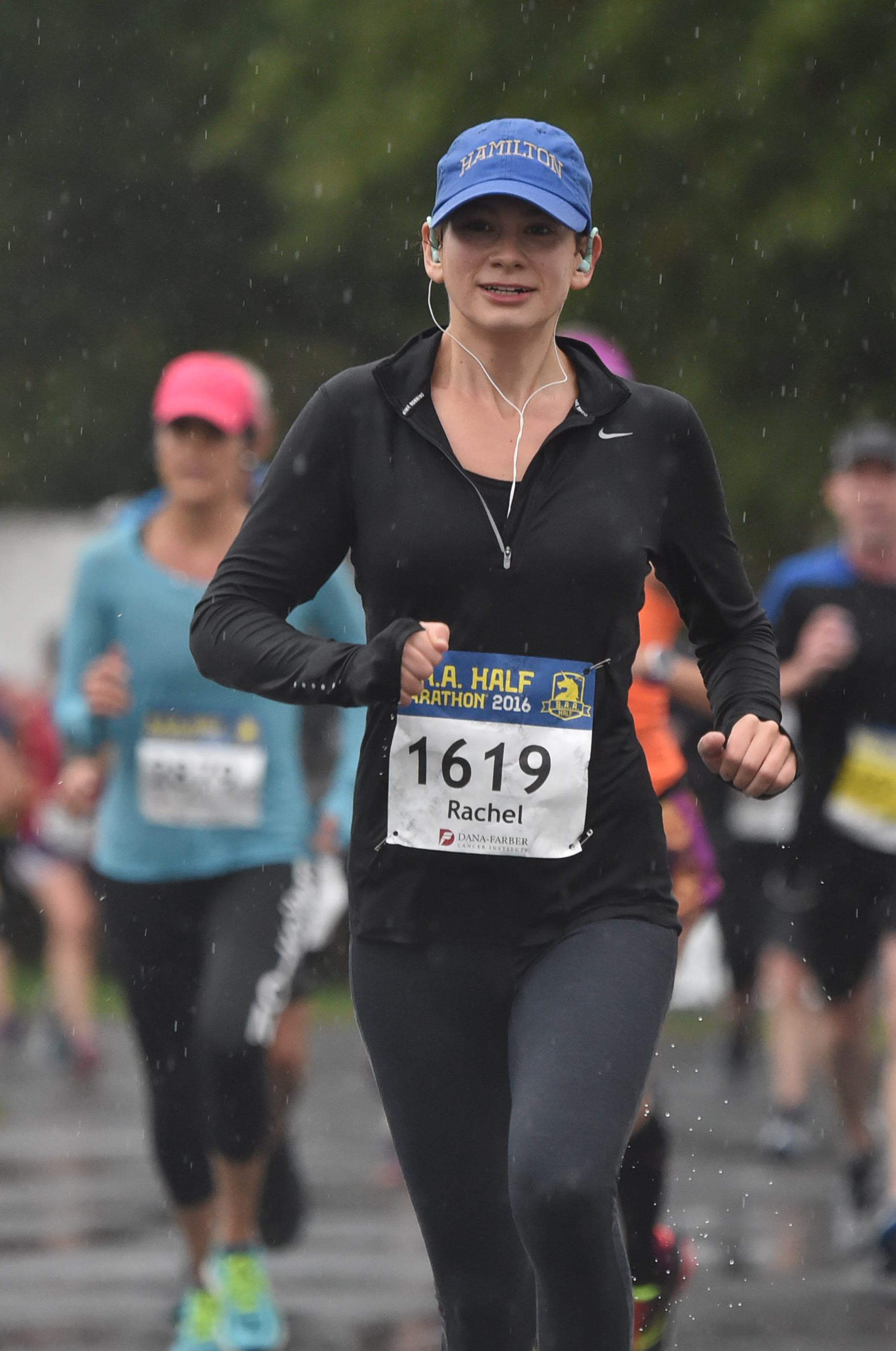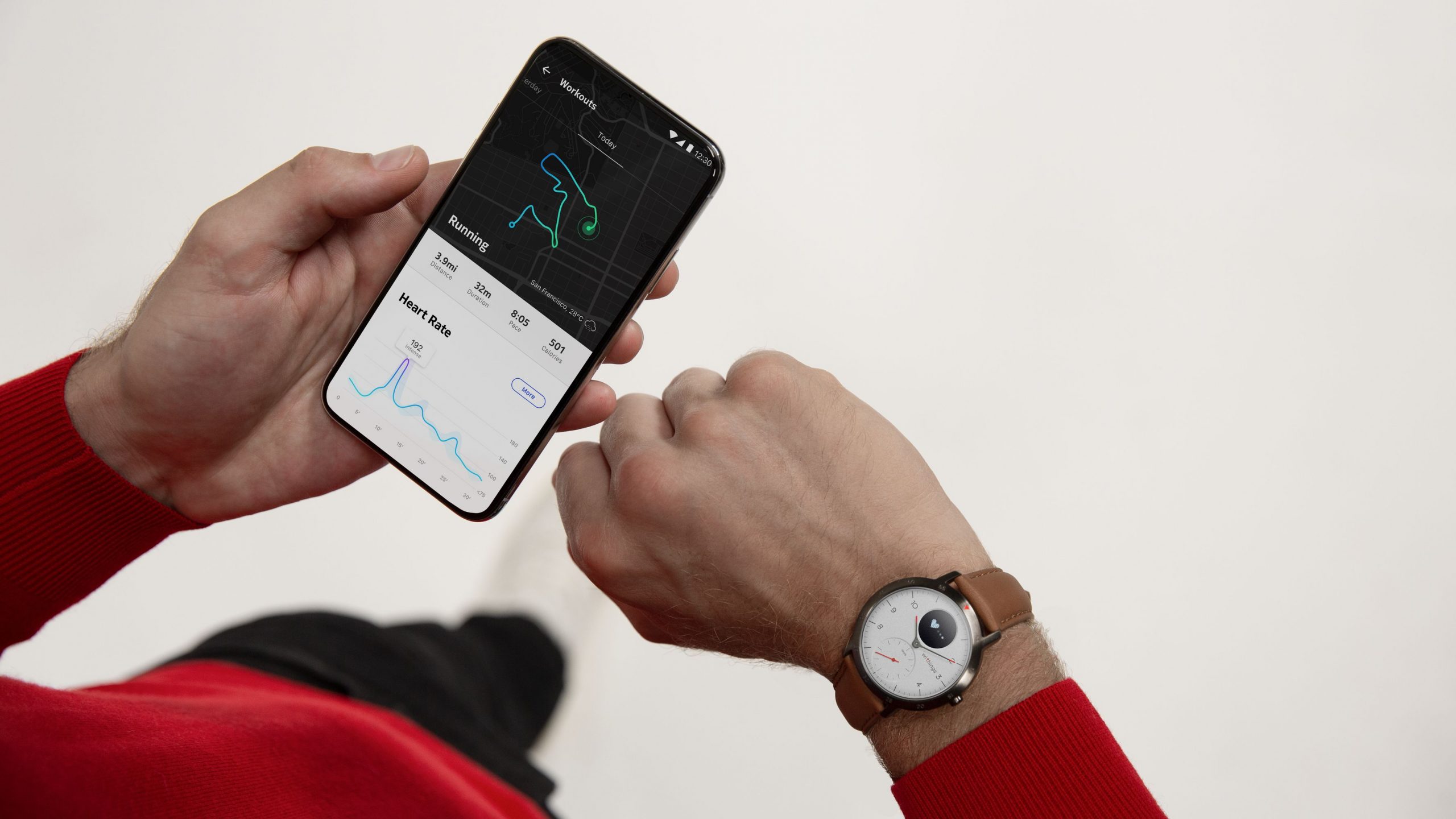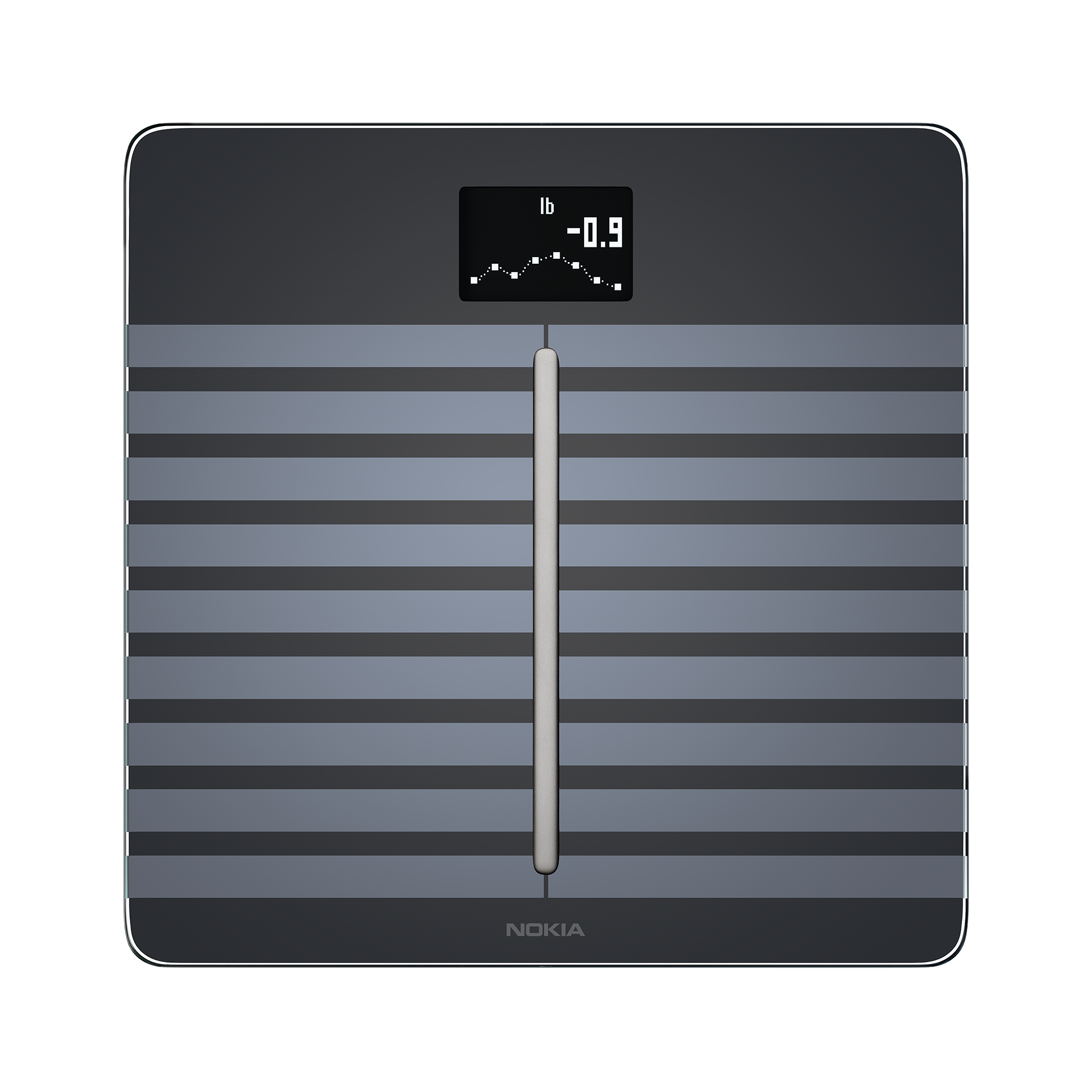
Our Global Content Director is new to the world of group fitness. She’s keen, but wants to know what she should/could be doing. She turns to a colleague with serious fitness chops for answers.
If you’re like me, you’re out of shape. What I mean is, I strive to make my step goal, and thanks to my trusty tracker, I now often do. But I haven’t been doing aerobic training since a 5K in October, and I haven’t done strength training since I don’t know when.
So, I recently headed to Clarity Fitness, an awesome local fitness studio. After taking a few classes I was jazzed, but found I’m clueless about how I should be feeling or what I should be doing. Luckily, I know one person, Rachel Glum, who is qualified/nice enough to answer my basic fitness questions.

Rachel, pictured, not only chronicled her marathon training for us, she has ACE Personal Training and Group Fitness certifications, has been regularly doing group fitness, yoga, and strength training since age 14, and she has a load of medals from long and short distance races.
Read on for my burning beginner fitness questions, and her inspirational and informative answers.
Beginner Fitness Q & A with Rachel Glum
Q: I took a Barre fitness and strength class. Loved it. I was so sore afterward. Two days later, I took it again, and was again so sore. I can’t walk up or downstairs without pain. Then, again, I was sore for two days afterward. Is this what fit people experience all the time?
Well….yes and no. Generally, any time you start a new activity, especially one that challenges your muscular strength and endurance, you will be very sore afterwards, and this can last a few days depending on the intensity of the activity and your fitness level. But the more consistently you integrate this activity into your routine, the less soreness you will experience afterwards.
When I re-integrated regular strength training workouts into my routine after almost 6 months off due to marathon training, I was incredibly sore after each workout for about 2 or 3 weeks. Now that I do it consistently again, however, I experience much less soreness.
But I wouldn’t go so far as to say that I don’t ever get sore…it’s just much more tolerable. I can go up stairs without my quads burning, or go about my day without feeling like I need to pop an Advil to deal with the pain. Soreness is most certainly not the only indicator of a good workout, but it can be a sign that you overloaded your muscles enough to stimulate growth or strength gain.
Q: When in a class, you are expected to do what the instructor does, but sometimes, it’s just not possible. Me doing 20 pushups rapid fire to the music or a 2-minute plank is not possible. Should I push myself? And how can I not feel like a failure in a public venue?
You’ve hit on one of my pet peeves here. It is so important to get in touch with your own body and learn the difference between challenging yourself and pushing too hard. It’s always ok to take breaks or modify exercises if you’re simply not ready for them yet. But having been both a group fitness-enthusiast and instructor myself, I understand the pressure to do what everyone else is doing or risk feeling like a failure.
But keep in mind that in a group fitness class, there will almost always be a wide range of fitness levels, abilities, and familiarity with the class. If you don’t honor your body and where you’re at that particular day, not only will you likely not enjoy the class, but you could risk injuring yourself. As hard as it might be, try not to focus on the super-fit athlete in the front row banging out 100 pushups. Instead, take a breath and focus on what you’re doing, and never feel ashamed to take breaks. A good instructor will always show or mention modifications, to appropriately cater to varying fitness levels.
In terms of figuring out when to push yourself and when to stop, this just takes a bit of practice. Push yourself a bit, then take a break. The next time, push yourself a little farther and see how you feel. If you repeatedly feel totally wiped out or sore for several days at a time, you might be pushing too hard, and dialing it down a notch might be a good idea. After a while, this will become second nature.
A few more tips:
- Arrive early to class, and tell the instructor that you’re new. A good instructor will tell you anything you need to know, such as what the class format is, and help you set up or adjust any equipment that will be used (spin bike, step, barbell etc.). They will also offer modifications throughout the class based on who is in their class each time.
- Go with a friend! I sometimes avoid new classes simply because I get nervous about unfamiliar experiences. Having a friend with me helps me laugh about anything stupid I might do, and simply enjoy the experience without taking it too seriously. Also, working out with friends generally makes the whole thing way more fun.
- Place yourself somewhere where you can actually see what the instructor is doing. Most newbies head straight to the back, but this can actually hurt your experience. You don’t need to go to the first row, but you’re sabotaging yourself before you even start if you can’t see what’s going on.
Q: Ugh — I read this article about how fitness may not help you lose weight and now I’m depressed. Can you offer some rah rah cheerleading for why I, a woman with insanely sore thighs, should keep up the fitness?
OK, I’m not going to lie, that is kind of depressing. I guess this might help explain why some people still manage to gain weight while training for a marathon and running 50 miles a week. But an article like this doesn’t affect my motivation to exercise, because there are so many benefits beyond weight loss.
There are the physical benefits: Reduced risk of heart disease, stroke, type 2 diabetes, metabolic syndrome, and some forms of cancer, leading causes of death both in the US and globally. Stronger bones and muscles, which also means less risk for osteoporosis and muscle atrophy when you age. Increased mobility and flexibility, which again can greatly improve your quality of life when you get on in years. And even increased life span.
And the mental benefits: Improved mood and mental health. Exercise can help treat depression and anxiety, improve body image and confidence, relieve stress, and even improve memory and focus. This means you’ll be happier and more productive all day. It can even help you sleep better, which improves both physical and mental health.
Those are the benefits that you can read about all over the web. But for me, a fitness enthusiast-turned-athlete, there’s something even deeper. I feel most alive, most free, most like I’m expressing my deepest human self when I’m moving. Running outside on a beautiful spring day connects me to nature and cultivates a deep gratitude for what my body can do for me. Seeing my strength gains each week in the gym makes me feel like a total badass.
But even if you don’t get to the point of total exercise love like I have (I realize I’m not exactly normal…), it’s hard to beat the post-exercise endorphins. It might be hard to get your butt off of the couch sometimes, but I guarantee that 98% of the time, you’ll be really glad you did.
Q: Anything about being a beginner I should’ve asked but did not?
It’s hard to give specific advice without knowing your current fitness levels, goals, and what activities you plan to pursue. But there are some things that will be important for everyone.
- Get at least one good pair of sneakers, specific to the type of exercise you’ll be doing. If you’re taking up running, go to a store where they will assess your gait and help you find the perfect shoe for you. If you will mainly be doing weight training, get flat-bottomed shoes that won’t elevate your heel too much. If you’ll be doing group fitness classes, it’s probably best to go with cross-trainers. And replace your sneakers when they get significantly worn down, or you could be at risk for injury.
- If you’re new to this whole exercise thing, getting a personal trainer is a great idea. Not only will this create support and an accountability partner, but you’ll be introduced to tons of new exercises. You’ll also have someone monitoring your form the entire time, so you’ll learn how to properly perform exercises.Personal training can be expensive, but it’s a worthwhile investment to make for your long-term health and fitness. Lastly, find exercise that you actually enjoy. Sure, running is a great cardiovascular workout, but if you hate it, don’t do it! Want to just do yoga every day? Go for it! Maybe this isn’t ideal for maximizing your all-around fitness, but it’s more important to create consistency and enjoyment in your exercise routine than anything else.
Spend a bit of time trying out different classes, exercise equipment, and formats until you find something that you’re excited about. If you’re starting out at a low fitness level, it might be more difficult for you to enjoy exercise at first, but if you stick it out, you will find something that you love.
***
Many thanks to Rachel for lending her time and expertise. And as an update, Susie reports that she is no longer crazy sore after Barre class.




